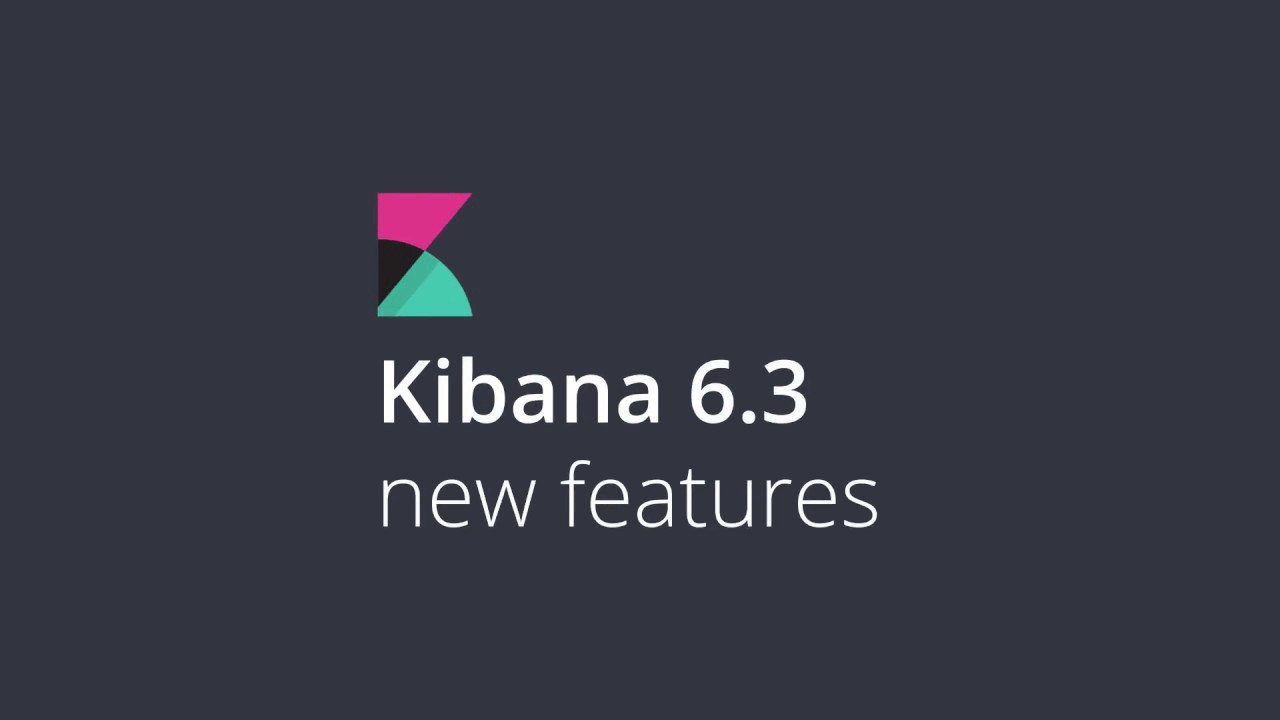Kibana 6.3.0 is released
Welcome to the 6.3.0 release of Kibana!
It’s Kibana release time again, and in this release in addition to the changes related to opening of X-Pack, you will see a lot of small and medium features. But don’t let their size fool you - these changes should have a large impact for the users.
Download Kibana 6.3.0
Kibana 6.3.0 release notes
You can get all the details in the release notes linked above, but there are a few changes which are worth highlighting:
- License management changes for opening the X-pack code
- Auto-complete in the Query Bar
- Jump back to where you left off
- Dashboard change to allow finer grained panel sizing
- Chained Input Controls
- Index management
- Interactive map support in Vega
- Easy way to enable Monitoring from UI
- Console enhancements
- APM watcher UI
- For developers: injectVars change
Read more about these new features down below, or if you'd rather see them in action...
License management changes for opening the X-pack code
With the opening of X-Pack users by default have access to all the Basic features of Kibana X-Pack. You will see this license level reflected in the UI. Users will be able to upgrade by starting a trial or uploading a license. Users can also revert back to a Basic license if they choose to.

Auto-complete in the Query bar
Based on the feedback we received after the initial introduction of a new experimental language for Kibana’s query bar, we have made several changes & improvements in this release. First, we have significantly simplified the syntax in order to focus on the ease of use. Second, we added autocomplete to the query bar. And finally, we have improved the search itself. To see the new features, just click the options link to the right of the query bar (or ask you Kibana admin to turn it on for you). Then when you start typing you will see suggestions for fields, values (for keyword fields) and query operators. See our recent blog for more on this.
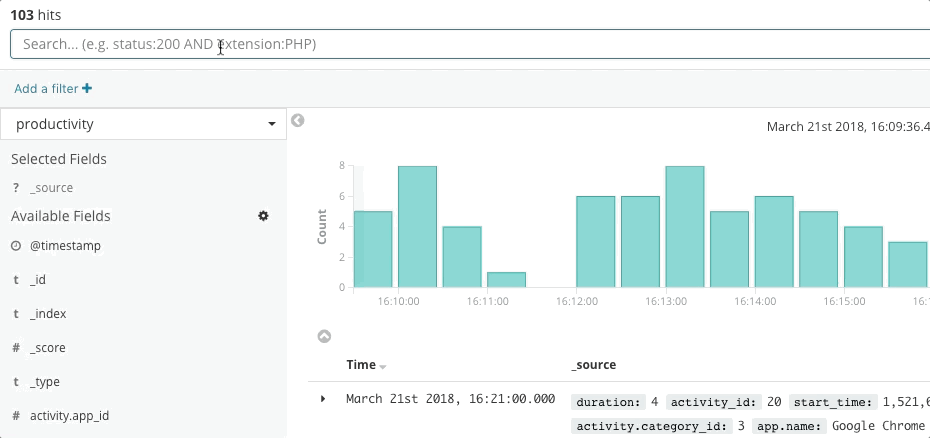
Jump back to where you left off
In 6.3 we have added two features to make it easier for you to get back to where you left off: a “Recently viewed” section to the top of Kibana home page and recent time ranges in the time picker. In the “recently viewed” section each user will see up to 5 recently accessed searches with a pulldown to access the rest if more than 5 are available. See PR #16556 for more details.
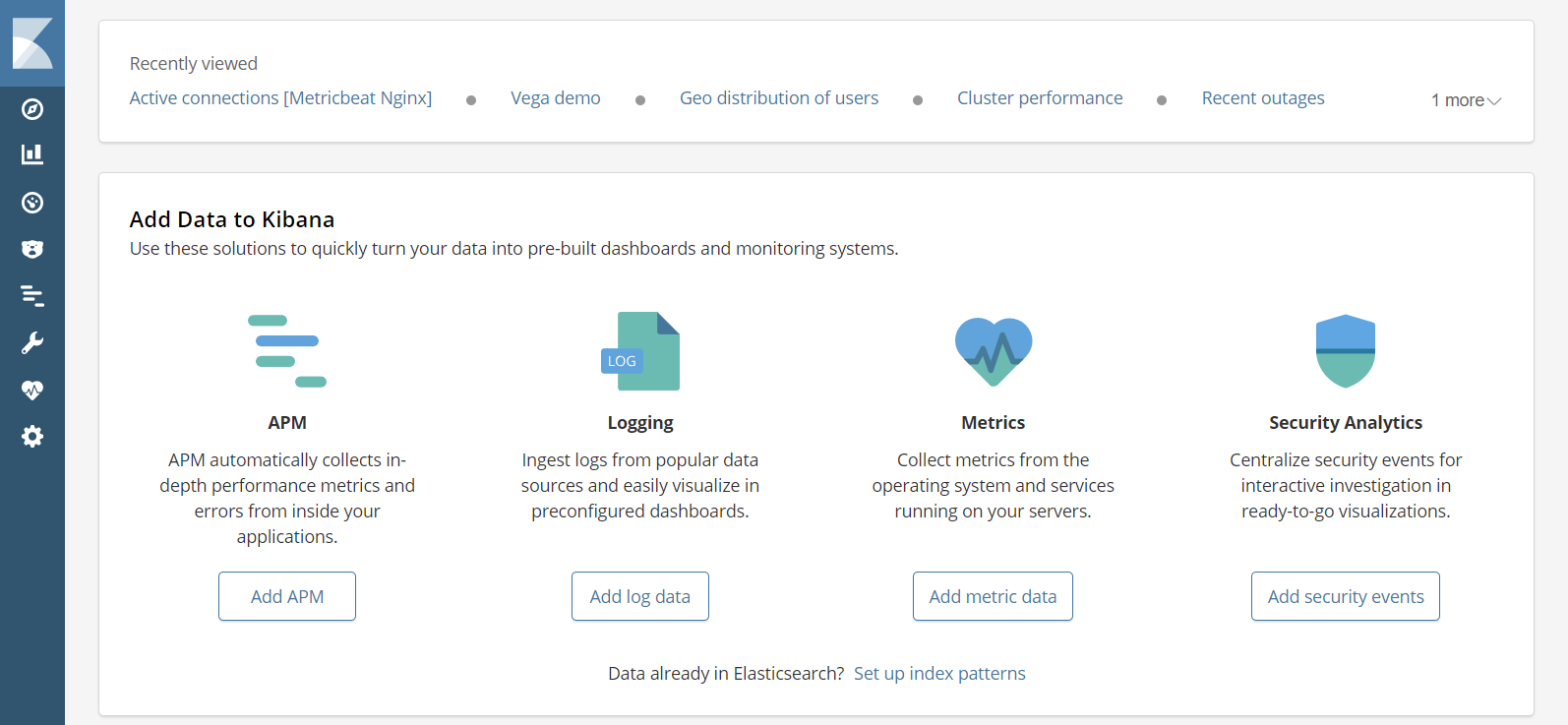
In the Time picker, user will similarly see most recent time ranges used.

Dashboard change to allow finer grained panel sizing
Dashboard grid height has been decreased from 100 to 20 and number of grid columns was increased from 12 to 48, which allows for a finer grained panel sizing in 6.3 version. See PR #16763 for more details.
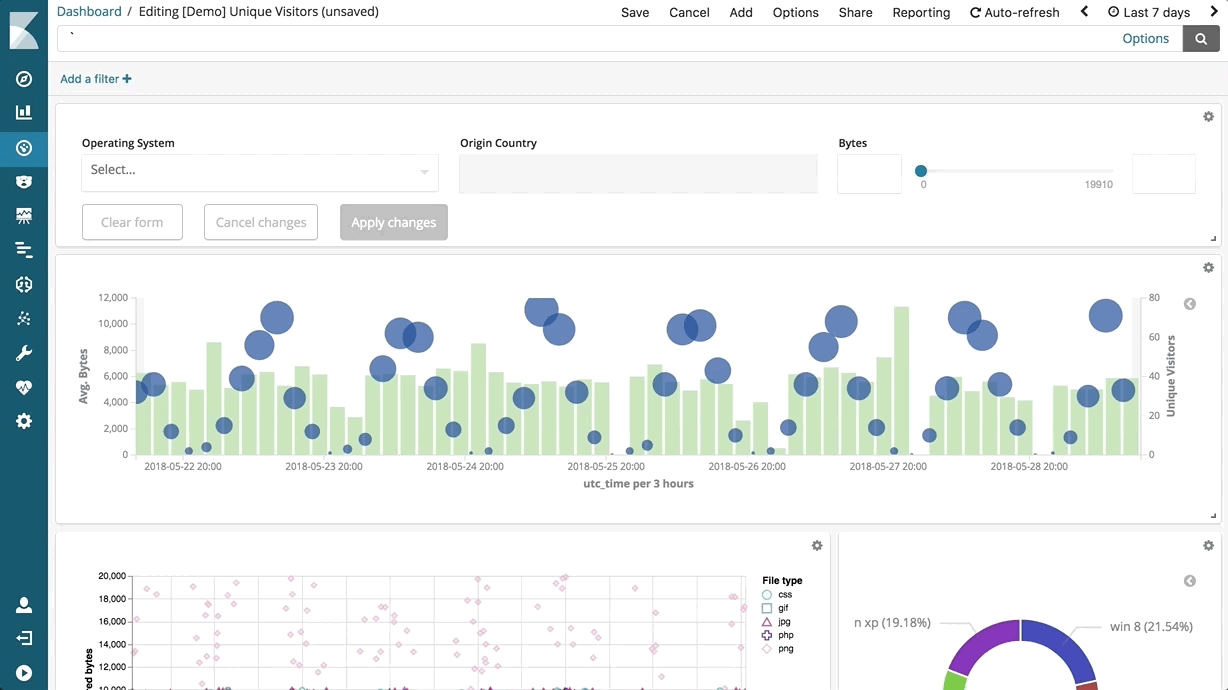
Chained Input Controls
This PR adds the ability to chain dropdown controls. A chained control is only enabled when all ancestor controls have values. The selectable options of a chained control are filtered by the values of all ancestor controls. See PR #16407 or this blog for more details.
Index management
In this release we have added a UI for managing indexes and changing index settings. User will see all configured indexes in a table view with key settings:
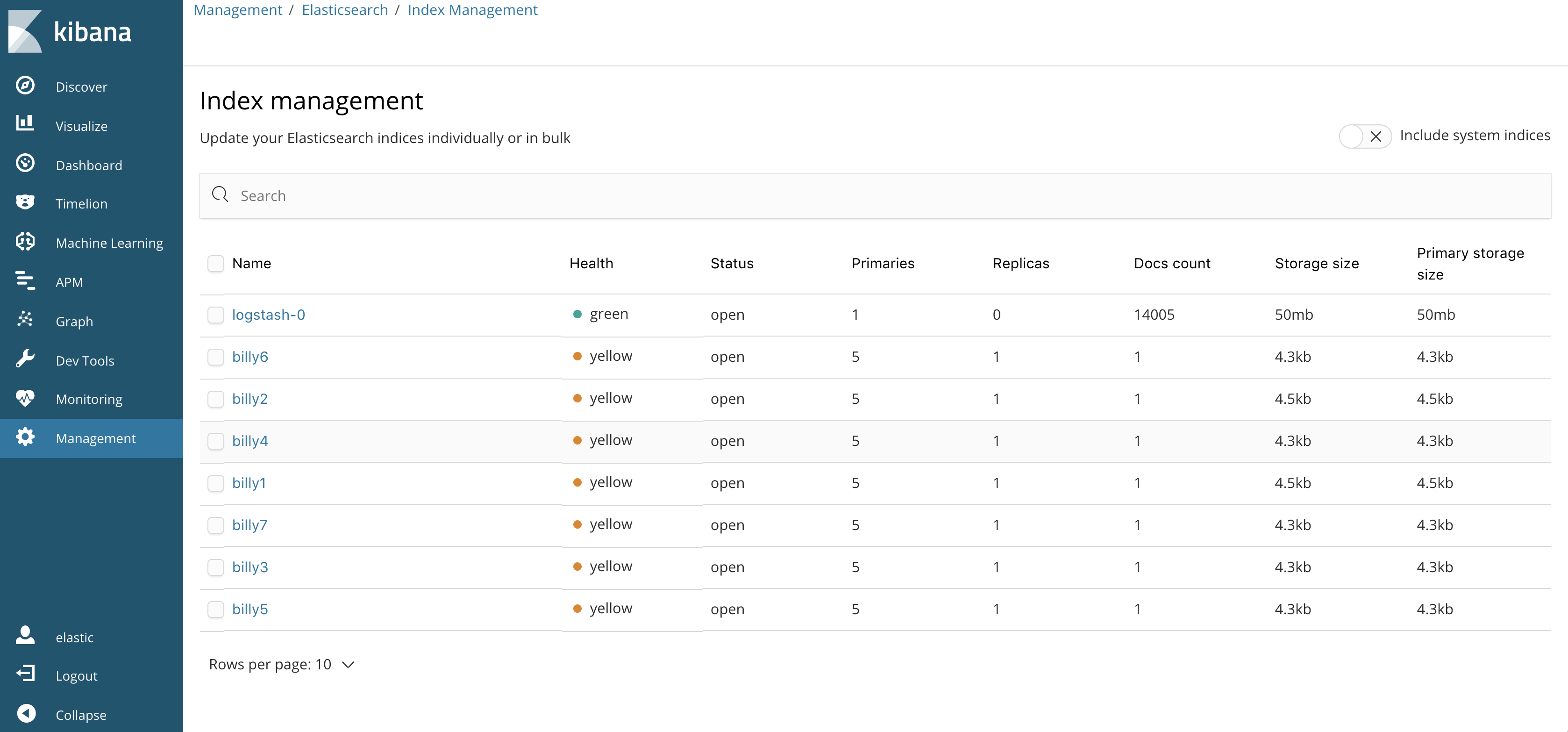
When user clicks on an index, they will see further details about that index:

User will also be able to modify index options and take some actions directly from the UI:
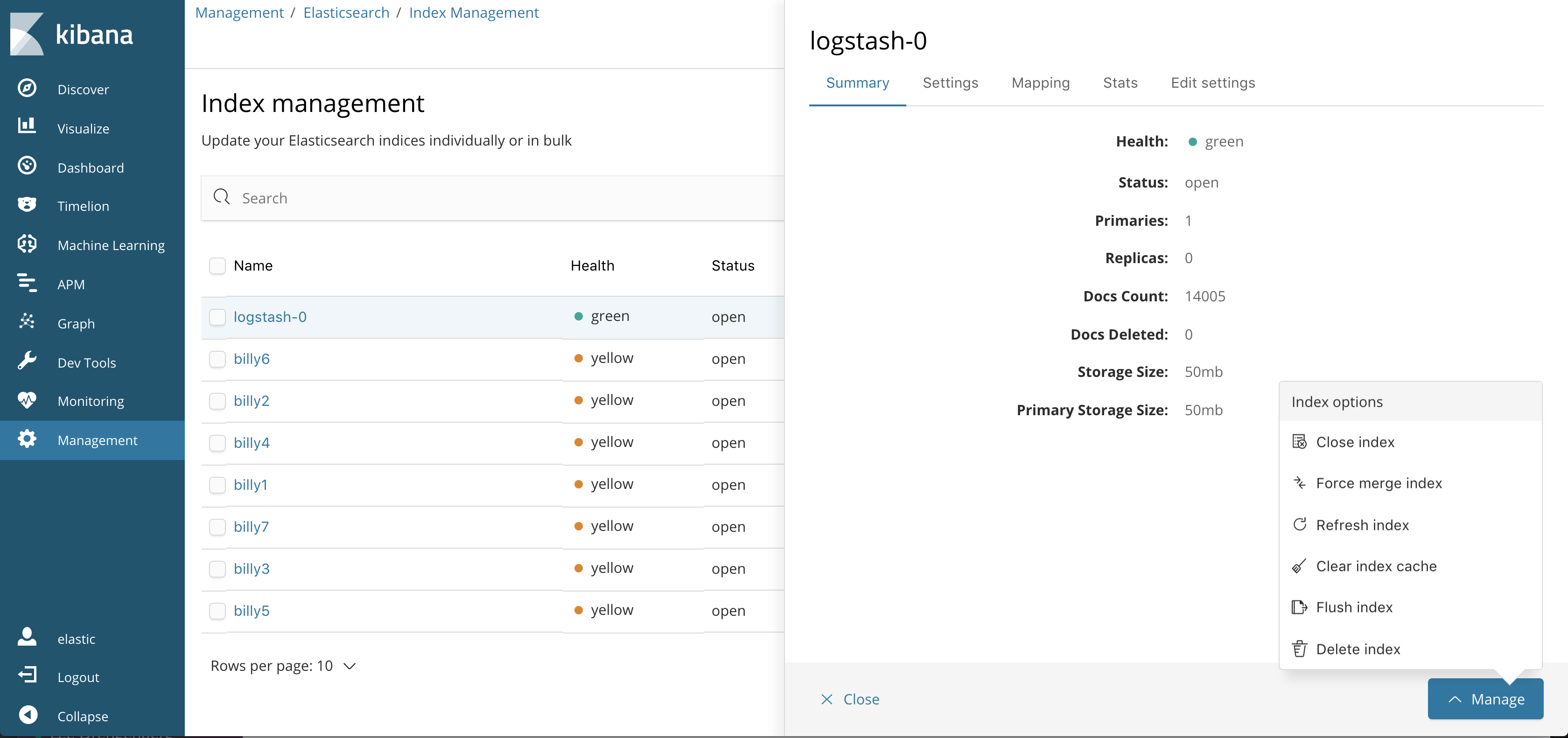
Interactive map support in Vega
In this version, we ported the Vega plugin map support into the Kibana version. Users can now pan the map and zoom to focus on different regions. See PR #16512
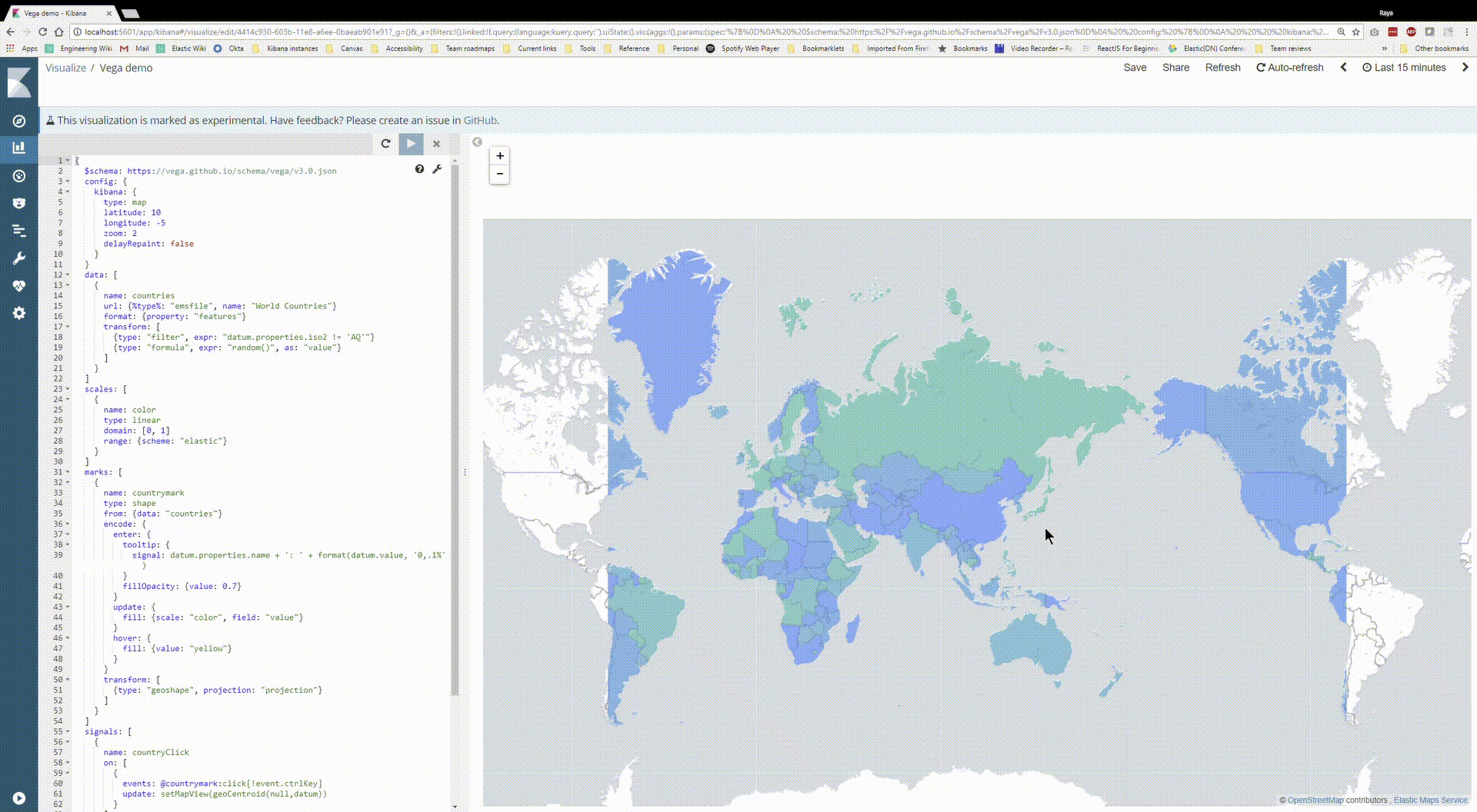
Easy way to enable Monitoring from UI
With the opening of X-Pack Monitoring is now part of the out of the box installation of Kibana under the Basic license. In order to make this easy to use, we now check if there is any data captured when user visits the Monitoring page and prompt user to turn Monitoring on if it’s not on. A user with sufficient permissions will be able to turn monitoring on directly. A user without sufficient permissions, will be prompted to contact the administrator to enable monitoring.
Console enhancements
Dev tools console auto-complete functionality is now expanded to use all Kibana and Basic X-pack APIs, same as search bar and other areas of Kibana. This ensures that auto-complete covers all use cases making the life of all Elastic Search users easier. Rejoice!
APM watcher UI
For users of APM server, we've added new UI integration that allows a user to add a watcher on new error groups for each service.

For developers: injectVars change
In this release we have made a change to the API for making server information available in the browser. Now, instead of exposing this information as part of the plugin’s configuration object, you use a method on the server object.
Before 6.3 (in your index.js)
injectVars: server => {
const config = server.config();
const basePath = config.get('server.basePath');
const kibanaVars = server.plugins.kibana.injectVars(server);
return {
basePath,
};
}
In 6.3, you use server.injectUiAppVars, usually in the `init` section of the plugin object
init: server => {
server.injectUiAppVars('yourAppId', () => {
const config = server.config();
const basePath = config.get('server.basePath');
return {
basePath,
};
}
}
See PR #17485 for more details.
Try it Out
Download Kibana 6.3.0 and try out the new features. Let us know what you think on Twitter (@elastic) or in our forum. You can report any problems on the Github issues page.
